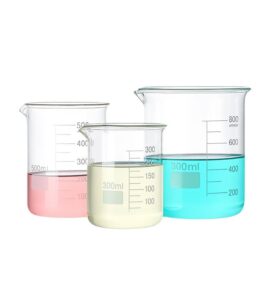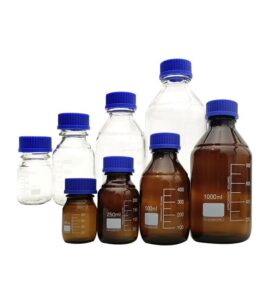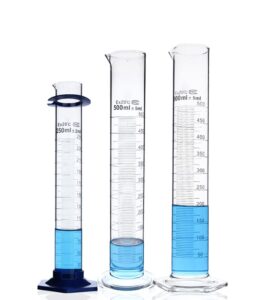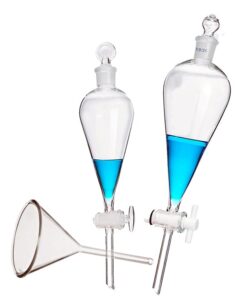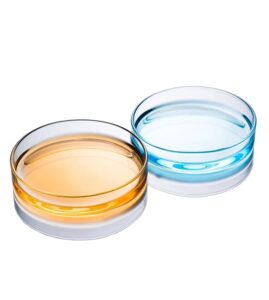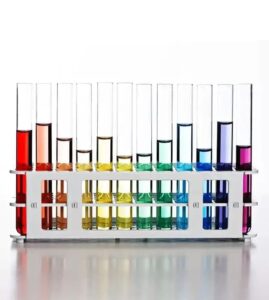Walking into a laboratory, you can’t help but notice the vast array of glassware with varying shapes and sizes. It’s like an intricate puzzle, and you can’t help but wonder, “What type of glassware is used in laboratories? Why are there so many variations?”
Laboratories make use of a diverse collection of glassware for different purposes, depending on the type of experiment or procedure being performed. Common laboratory glassware includes beakers, flasks, test tubes, pipettes, burettes, and petri dishes. These seemingly simple tools are indispensable in the world of scientific exploration and discovery.
Join me on this journey as we explore the fascinating realm of laboratory glassware and uncover the secrets behind their unique designs and functions.

Laboratory Glassware: The Essentials
First up are the beakers, often considered the backbone of any laboratory. These cylindrical containers have a flat bottom and a spout for convenient pouring. They are primarily used for mixing, heating, and storing liquids and come in various sizes, ranging from a few milliliters to several liters.
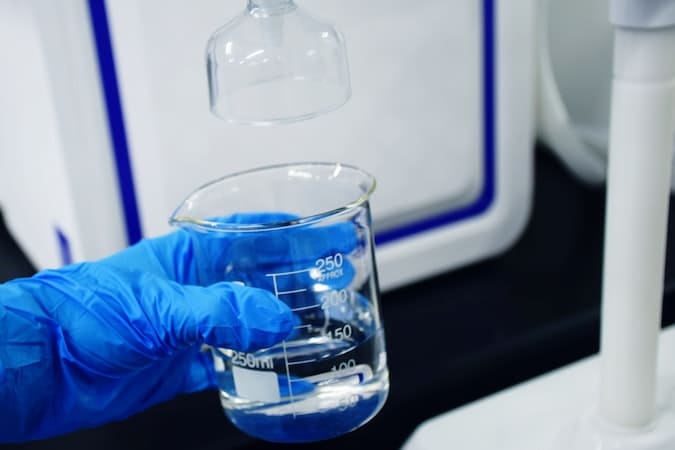
Flasks are another ubiquitous sight in laboratories. The most common types include the Erlenmeyer flask and the volumetric flask. The Erlenmeyer flask, with its conical shape and flat bottom, is typically used for mixing chemicals, while the volumetric flask, characterized by its long neck and bulbous base, is crucial for accurate measurements of liquids.

Next, let’s talk about test tubes. These small, cylindrical glass instruments are essential for holding, mixing, or heating small quantities of liquid or solid chemicals. Test tubes are vital in both qualitative and quantitative experiments where precision is of utmost importance.

Specialized Laboratory Glassware: Beyond the Basics
While beakers, flasks, and test tubes are standard, laboratories also utilize other types of glassware designed for more specialized tasks.
A pipette is employed when scientists need to transfer specific liquid volumes. They come in two designs: the volumetric pipette, which delivers a single specific volume, and the graduated pipette, which can measure varying volumes.
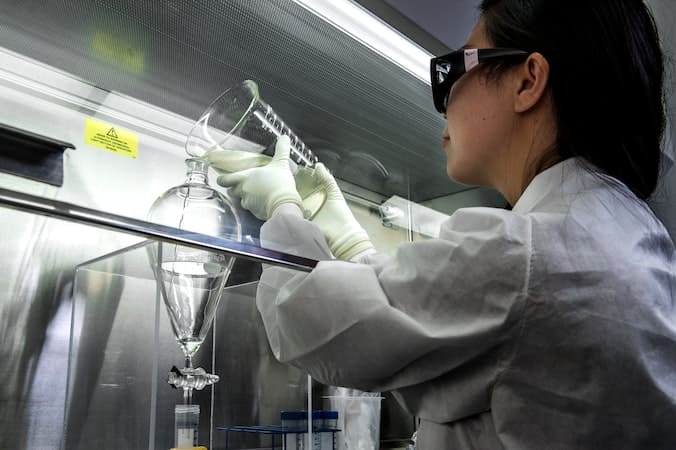
A burette is a long, graduated glass tube with a tap at the bottom, employed in titration to accurately measure liquid or gas volumes.
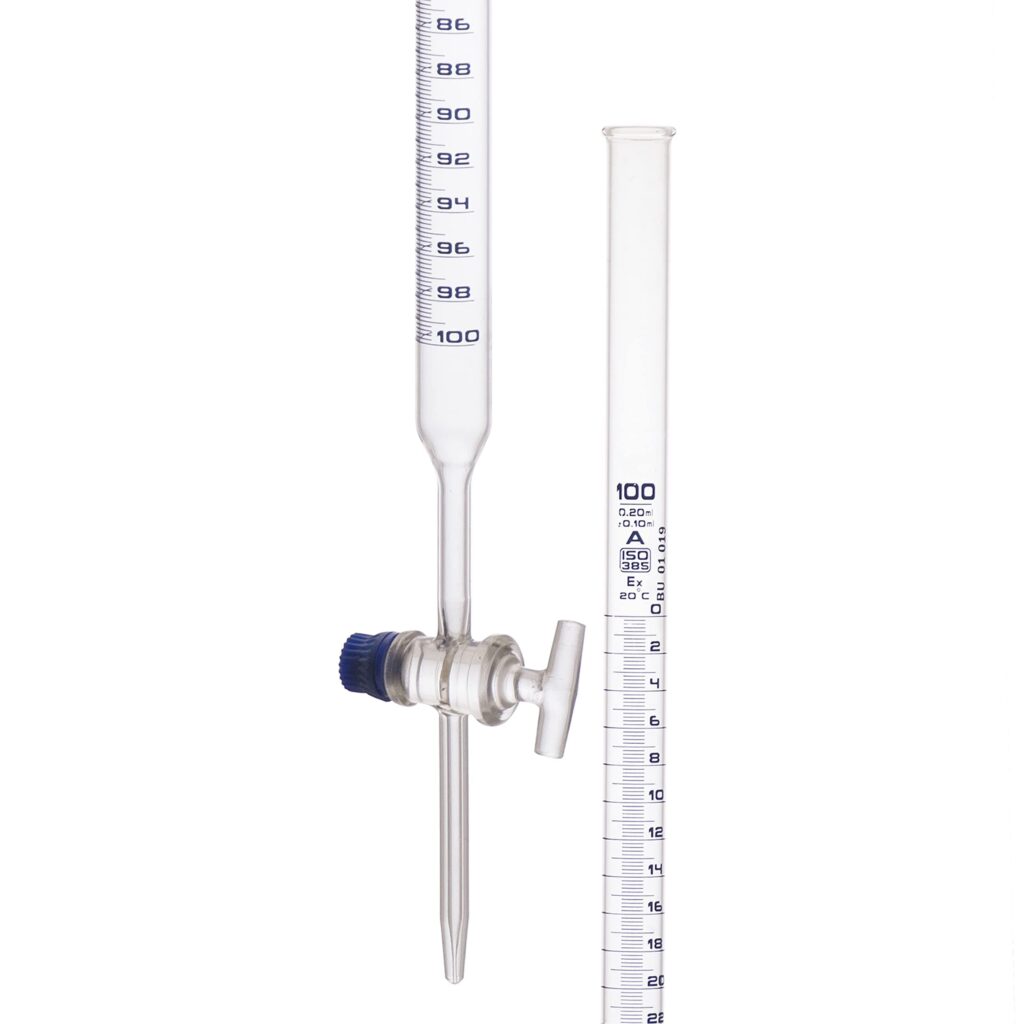
Petri dishes are shallow, cylindrical glass or plastic lidded dishes that biologists use to culture cells, such as bacteria or small mosses.

How to Choose the Right Glassware for Laboratory Tasks
Selecting the appropriate piece of laboratory glassware depends on the task at hand. Factors such as the volume and type of material, the need for accurate measurements, and the nature of the experiment all play a role in this decision.
For instance, beakers are often used for rough measurements, while graduated cylinders and burettes are employed for more precise ones. Test tubes are perfect for small-scale reactions, and petri dishes are indispensable for cell culture and microbiological analyses.
The Advantages of Glassware in Laboratories
Laboratories prefer glassware because it can withstand heat, is resistant to chemical reactions, and is transparent, allowing for easy observation of its contents. Borosilicate glass, such as Pyrex, is often used in laboratory glassware because it is specifically designed to endure harsh conditions.
Alternatives to Glassware in Laboratories
Although glassware is the most common material you’ll encounter in a lab, alternatives do exist. Plasticware, for instance, is often used due to its durability and lower cost. However, its heat resistance and resistance to chemical reactions are inferior to glass, limiting its applications.
Proper Care and Maintenance of Laboratory Glassware
The proper care and maintenance of lab glassware are crucial for the success of experiments. Glassware should be cleaned promptly after use to prevent any residue from drying and becoming harder to remove. Moreover, using the appropriate cleaning equipment and chemicals can ensure the longevity of these valuable tools.
Laboratory glassware, in all its various shapes and sizes, plays a vital role in the realm of scientific discovery. Be it a beaker for mixing solutions, a flask for exact measurements, or a petri dish for cultivating cultures – each piece of glassware serves a unique purpose in propelling scientific progress. The correct use and maintenance of these tools are equally essential to ensure the reliability and validity of the results produced.
As you step into a laboratory next time, you’ll now appreciate the symphony of glassware that facilitates the creation of knowledge and discovery.


